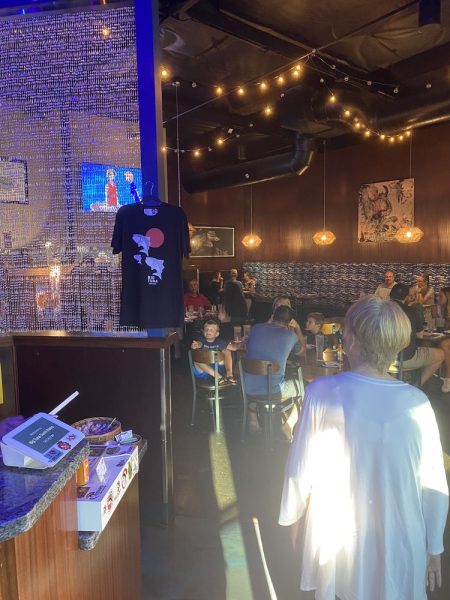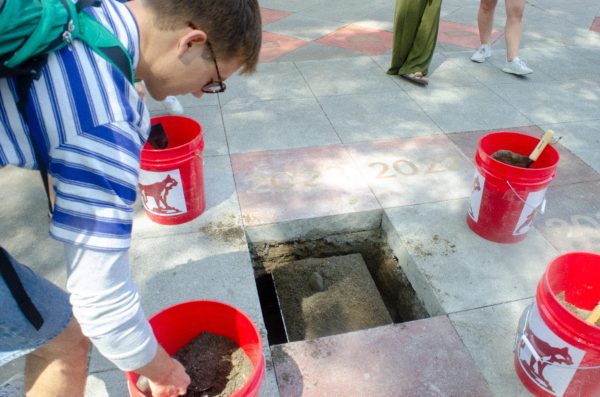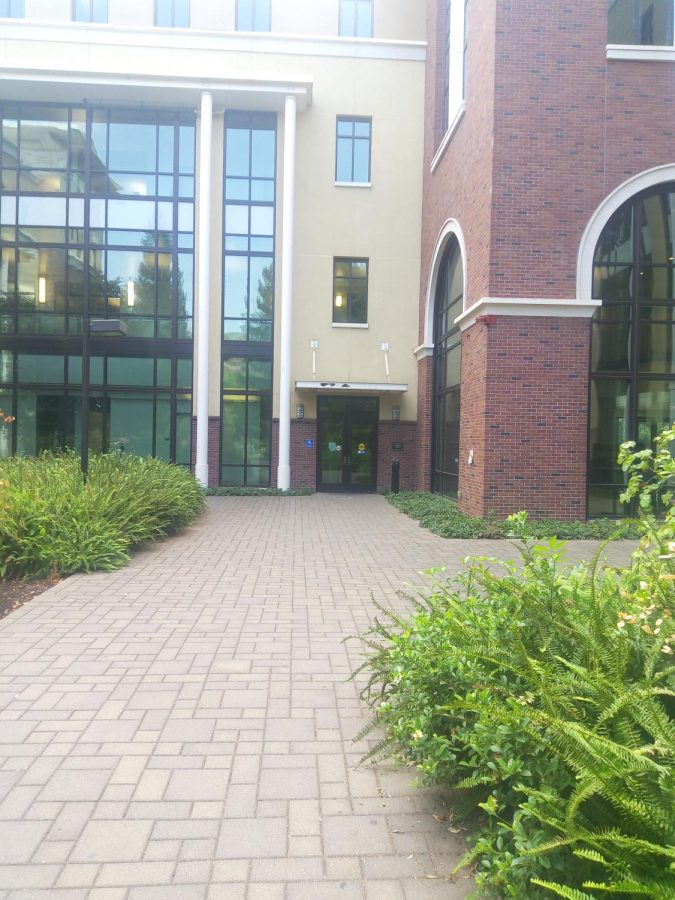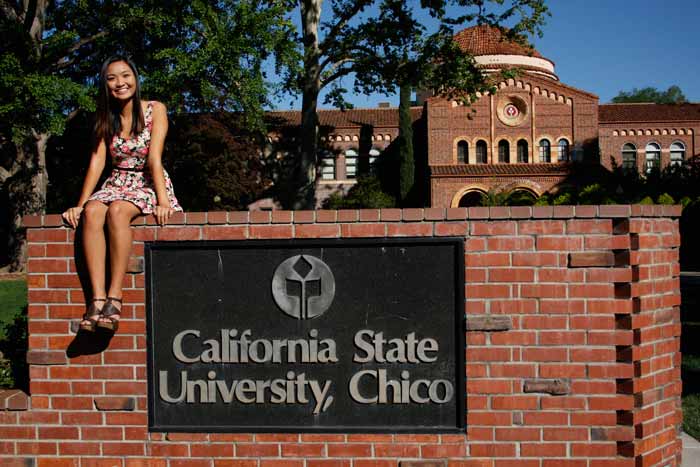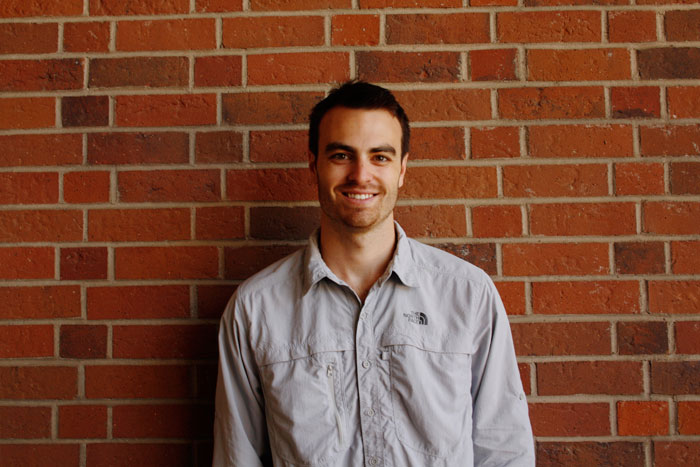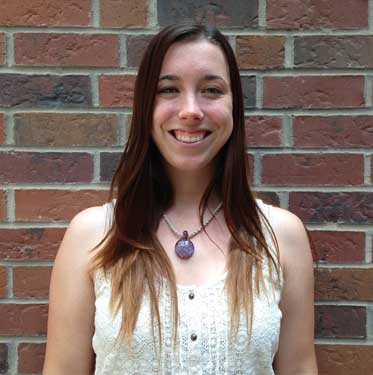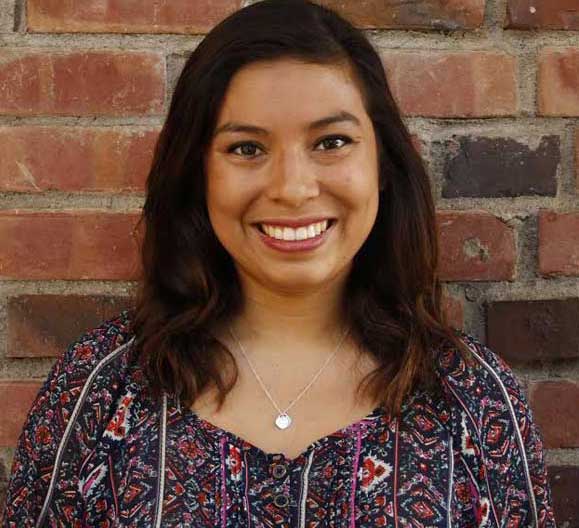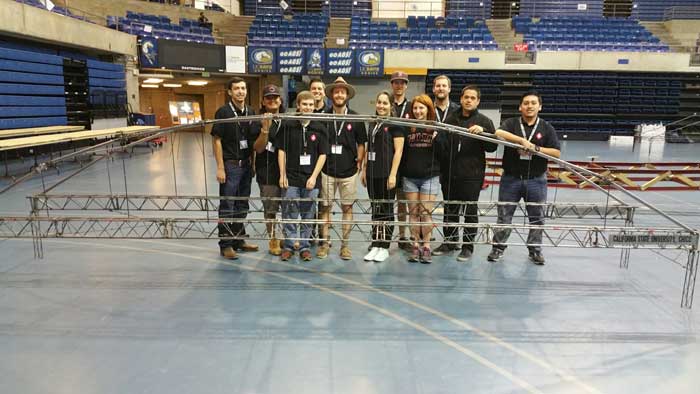Published 2002-03-13T00:00:00Z”/>
Jason Goldman-Hall<br>Senior Writer
Senior LaVette Ford is like many other Chico State University students. She takes part in sports, works hard in her classes and enjoys spending time witth friends in the breezeway of Meriam Library.
But something about Ford sets her apart from more than 98 percent of her fellow students, and makes her stand out in crowds.
She is black.
“It’s odd when teachers talk about multicultural things, and you raise your hand to speak up, and everyone looks at you because you’re the only minority,” Ford said.
While he doesn’t feel left out in classes, junior Chad Urabe misses cooking from Hawaii, were he grew up, especially the exotic seafood.
“It’s just pizza, Mexican and Chinese food around here, I miss my Hawaiian food” Urabe said. “I used to eat a lot of fish, but I don’t now. I guess it’s hard to get fresh fish around here, although there is some good salmon.”
Urabe is Japanese, but born and raised in Hawaii. He said while he has some friends that share a similar ethnic background, many of his friends are white. Something that reflects the area he lives in.
Ford and Urabe are feeling the affects of culture shock. Usually thought of as the effect a diverse community has on a person from a primarily one-culture lifestyle, non-white students are feeling put off by a school dominated by white culture.
Minorities at Chico State make up roughly 20 percent of the 15,912 students enrolled this semester. Of that, less than 2 percent are black and the largest minority group, Hispanic students, make up only 9 percent of the overall population.
Despite efforts by Admissions and Enrollment to increase diversity to reflect the changing social structure of the state, Chico State has remained primarily white. In the last three years, many ethnic group percentages have, in fact, decreased, while their numbers in California continue to rise.
Administrators are worried about the school’s image, and minority students and faculty are feeling left out. Some professors said the lack of diversity is reflective of racism in the university.
In addition to students being affected, the continuing lack of diversity means Chico State is failing at goals set in 1996 by the Western Association of Schools and Colleges. In the section of the report, regarding diversity, Chico State set out to increase diversity to keep up with a predicted influx of ethnic groups into California universities.
The first goal set was to change the way ethnic students on campus felt. In it, Chico State was to “try to create an environment in ‘greater Chico,’ that is safe, free from harassment and intimidation, and welcoming, friendly, and respectful for all students, staff, and faculty. The climate that minority faculty, students, and staff have described has a deleterious and chilling effect on the lives and scholarship of people of color at Chico. It is not learning-centered.”
So far, this has not been met. Parts of the WASC plan have been worked on, but according to reactions from students on campus, it has not been successful, and the negative consequences of a lack of diversity are still being felt.
One part successful part of the plan is the increased recruiting qualified minority students into Chico State. Tray Robinson, admissions counselor and minority recruiter spends much of the year on the road trying to do just that.
“There are a couple of ways we try to recruit minority students,” Robinson said. “College fairs that multiple (high) schools attend, and even individual visits to schools. We visit clubs on those campuses that represent ethnic groups.”
At high schools dominated by non-white students, Robinson says the recruiters target academic clubs, because Chico State is first a place of higher education.
One problem that Robinson and other recruiters note in trying to increase Chico State’s appeal to minority students is the lost of key attractants.
Losing the football program cut black enrollment. Since 1987, the number of black students at Chico State has fallen. In just the last five years alone, the number has dropped by roughly 20 students each year.
The WASC report also collected responses from students in 1996 about their reactions to the campus. Some of the reactions indicated students at the time felt there were too few minority students on campus. Some were even feeling discriminated against. After five years of work by the university, the mood remains.
“I definitely think that (lack of diversity) has a negative effect on students,” said senior Marcus Toney, a black student. “I see people that aren’t used to being in the same space as my race, but it’s temporary. It’s just a struggle to adjust.
The struggle to adjust is not limited to students of color. Robinson said some white students don’t come to Chico State because of the student population.
“It even prevents some white students, mostly from Los Angeles or the Bay Area, from coming,” Robinson said. Both Los Angeles and the Bay Area have significantly higher minority populations than the Chico area.
Toney said common interaction with various ethnic backgrounds can present a challenge for people once they are confronted with people that don’t look like them. This challenge, however, does not have to end in a negative outcome.
“I look at it as an opportunity to meet new people and become friends with other races,” Toney said.
The lack of diversity, he said,affects students by not allowing interactions between people in the sort of day-to-day environment the future job market is going to force them into.
“I think that this environment affects everybody, and when I say affects, I mean any kind of input you get is changed. If you chose to stay here for school, or to live, it’s something you take into consideration,” Toney said.
Toney said curricula and campus events can fill some of the gaps in a non-diverse social commmunity, but more needs to be done. Chico State has been slow in beginning ethnic-studies programs in respect to other state universities. According to Robinson, Chico State lacks an African-American Studies degree program.
“When you’re in a university, you have access to all different cultures,” Toney said. “It just may be harder to get, harder to feel, on a campus like this, but if you feel you’re missing out, you can tap into it through books or the Internet.”
Chico State also offers many multicultural or ethnic events for students to “tap into”, but many said the efforts are either not enough, or not publicized effectively.
“They have a multicultural night thing, but all they do there is dance, and that’s not the only part of culture,” said black senior Jamara Stallworth.
“They should have more speakers come to talk about cultural things, like the Holocaust, to open peoples’ eyes.”
Ford, a friend of Stallworth’s, agrees the current situation is not enough.
“They have a lot of speakers, but not about things like what the Chinese went through when the built the railroads, or like Jamara said, the Holocaust,’ Ford said.
Maurice Patterson, a freshman of black and Filipino heritage, said Chico is a relatively diverse community, and his experiences reflect that.
“I grew up in a white, preppy neighborhood, so I’ve been involved in a lot of things here at Chico that I had never experienced. Chico is actually more culturally diverse than where I grew up,” Patterson said.
However, he said, more work needs to be done to make people aware of the events going on.
“I don’t think they make cultural events as publicized as they should,” Patterson said. “We had a Chinese festival back home, it was all over the papers, there were banners all over. It was held in a center downtown, and a lot of people came.”
Chad Urabe said the lack of diversity may be to blame for lack of participation in various events.
“Students of color may feel apprehensive about joining an activity that they don’t see anyone of their ethnicity participating in,” Urabe said. “That’s a problem when you look around here and see mostly white students.”
In addition to a lack of events, Patricia Ocampo, a Hispanic student, said there isn’t an opportunity for ethnicities to interact during regular school hours, because they separate themselves. It reminds her of how cliques form in high school, people feel the need to conform to their group in order to belong.
“All the different cultures group together. You can totally see the difference, how none of the groups join together,” Ocampo said, gesturing towards a bench near the library, where several Hispanic students were engaged in a conversation. “I feel like I don’t belong anywhere because I’m Hispanic, but I don’t hang out with the Hispanic group on campus.
While she identifies herself as Hispanic, Ocampo said she is “in-between” cultures.
“I’ve always taken a neutral stance on racial issues,” Ocampo said. “I mean, you have these Hispanics who call themselves ‘Chicanos,’ or ‘Latinos,’ or whatever, and they claim to be both cultures, white and Hispanic, but I don’t feel like I’m both, I feel like I’m in between. I do tradition Mexican cultural things, and take part in white culture, so I feel like I’m in-between.”
Ocampo said she grew up in the area, and Chico State simply reflects this part of California.
The surrounding area is made up of predominantly white residents. The WASC report contained several accounts of racism, often severe, as a result of this mostly homogenous area.
“I remember an early experience at Chico during my first day here. I entered the Safeway parking lot only to observe a group of skinheads beating a young Chicano with baseball bats,” said one such WASC account.
There were four accounts like this in the WASC report, but today, students said racism is limited to verbal harassment.
“I’ve never experienced racism on campus, but I have experienced it off campus,” Toney said. “A couple of words have been here and there, but it’s usually by non-students, people driving by. It affected me for a little while, but I didn’t let it weigh on my mind for very long.”
Ocampo said while she has never felt racism or discrimination on campus, her brothers have in the past.
“My brothers both attended Chico State,” Ocampo said. “They had conflicts with men in the Hispanic fraternity. (The fraternity members) would make comments about them not wanting to be in the fraternity. They would say ‘Oh, they were white-washed,’ and things like that.”
In addition racism and other typical cultural problems, many students on campus recognize long-term, negative affects that living and learning in a non-diverse area can have on a student’s world view and job prospects. This affects all students, not just students of color.
“I think that when you get into the real world, you’re not going to work with only one ethnicity. You have to understand what other races have gone through,” Stallworth said.
Charles Cambridge, a business professor for the last 23 years, shares Ford’s feelings.
“When (students) go into the real world, they won’t be as competitive as their colleagues who have been exposed to a more diverse community,” Cambridge said. “Any experience that reduces exposure students have to the American population mosaic is less than a full experience. It’s like being raised eating only corn, and thinking that it is the only vegetable on the menu.”
He said Chico State students are ill prepared by campus life for the real world, particularly in California.
“In California’s population, the majority is non-white. Students are Chico State are lulled into a false perception that Chico mirrors California. With this, everyone is disadvantaged, students, faculty, everyone.
While Cambridge shares views with many students on campus, he said a homgeneous community is not simply a product of the surrounding area or students feelings. He said there is a conscious effort in the school to remain white, a tendency he said is common throughout the nation’s universities. He said the campus’s efforts to diversify aren’t enough.
“I think the university tries, but they need to try harder. I think that if they were diversify the faculty, they would have a jump in the enrollment,” Cambridge says. “The faculty has gotten worse since I got here. I am the only, and probably last, black faculty member in the school of business, and there are only 250 black faculty like me in the country.”
Cambridge said it’s no surprise diversity is dropping on campus, given the treatment of minorities by school administration.
“A predominantly white faculty will continue to replicate itself. Administration can use concepts of merit and worth to mask unadulterated racism. This is the crisis of America.”
Cambridge said a lack of diversity is a signal of a greater problem with schools in the United States.
“There is a perception in academia that non-white faculty threaten the hegemony of white academics, so when non-white candidate apply, they will not make it,” Cambridge said. “In my estimation, the academy is the last bastion of racism in America.”
Journalism professor Dr. Peter Gross said claims of racism in academia are nothing more than unfounded opinion, and to increase diversity by hiring people based on color rather than qualifications is discrimination in itself. It also presents another problem by lowering, or not following, standards that the university should have.
“Curriculum needs to reflect standards of higher education, not politically correct agendas,” Gross said. “Institutions of higher learning should not have these sort of goals, they should have educational goals.
Making special rules, or giving special treatment can have a negative impact on all students, he said. Many minority students come from similar backgrounds as non-minority students, and attempts to diversify can, in fact, have the reverse affect.
“There is a basic problem with the suggestion that, if I’m a minority, I am so drastically different than you, that I will think in a way complete different than you,” Gross said. “That is not necessarily true, it is racist to assume that. That is the politically-correctness of diversity, and it can lower the value of the university.”
Gross said diversity goals should not compromise the quality of education or standards at an institution such as Chico State. An unnatural effort to diversify will not help the campus, but only lead to tokenism and other related problems.
One such problem is if groups are not choosing to be together, they will stay separate. The self-segregation Patricia Ocampo saw in fellow Hispanic students is one such example.
“It is not diversity until we sit down, on our own, with people of other colors or cultures and say ‘hi, how are you,'” Gross said. “It must be natural.”
Minority recruiter Tray Robinson has the same view of attempts to diversify. He said the appeal of Chico must not be based on color, but rather on the area, on the school, and the people already here. To diversify, students of all different backgrounds need to choose Chico State, not be chosen by Chico State.
“We need to let more students, from all over, but especially the inner cities, know more about our university, so we can get them here, to see our school,” Robinson said. “We need to get them to fall in love with the school and the environment that way so many of us already have.”
Also in this series: <a href= “http://www.orion-online.net/vnews/display.v/ART/2002/03/13/3c72eee72ef5a”> Diversity takes a back page</a>



